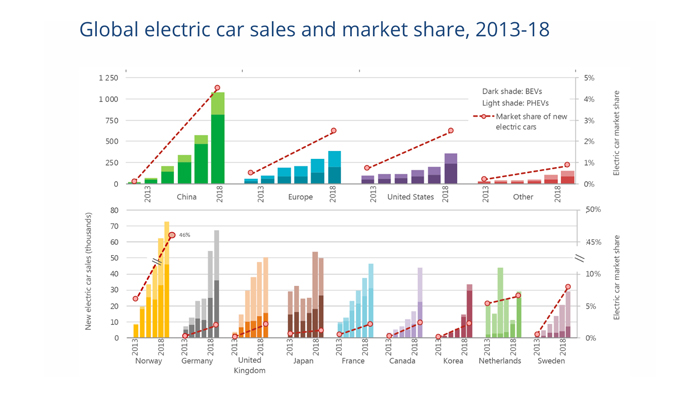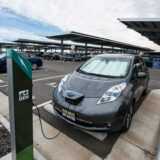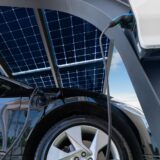
Electric mobility continues to grow rapidly, says IEA’s Global EV Outlook
The global electric car fleet exceeded 5.1 million in 2018, up by 2 million since 2017, almost doubling the unprecedented amount of new registrations in 2017, according to the latest report from the International Energy Agency (IEA).
The IEA launched the 2019 edition of the Global EV Outlook, the flagship publication of the Electric Vehicles Initiative (EVI), at the 10th Clean Energy Ministerial (CEM) meeting in Vancouver on 27 May 2019.
The Global EV Outlook combines historical analysis with projections to 2030, providing key insights on electric vehicle and charging infrastructure deployment, ownership cost, energy use, carbon dioxide emissions, and battery material demand. The report includes policy recommendations that incorporate learning from front-running countries to inform policymakers and stakeholders that consider policy frameworks and market systems for electric vehicle adoption.
China remained the world’s largest electric car market, followed by Europe and the United States. Norway was the global leader in terms of electric car market share (46%).
The global stock of electric two-wheelers was 260 million by the end of 2018 and there were 460,000 electric buses. In freight transport, electric vehicles (EVs) were mostly deployed as light-commercial vehicles (LCVs), which reached 250,000 units in 2018, while medium electric truck sales were in the range of 1,000-2,000 in 2018.
The global EV stock in 2018 was served by 5.2 million light-duty vehicles (LDV) chargers, (540,000 of which are publicly accessible), complemented by 157,000 fast chargers for buses. EVs on the road in 2018 consumed about 58 terawatt-hours (TWh) of electricity (largely attributable to two-wheelers in China) and emitted 41 million tonnes of carbon dioxide equivalent (Mt CO2-eq) while saving 36 Mt CO2-eq compared to an equivalent internal combustion engine (ICE) fleet.
This year’s edition features analysis on the performance of electric cars and competing for powertrain options in terms of greenhouse gas emissions over their life cycle. It also discusses key challenges in the transition to electric mobility and appropriate solutions including vehicle and battery cost developments, supply and value chain sustainability of battery materials, implications of electric mobility for power systems, government revenue from taxation and the interplay between electric, shared and automated mobility options.
The launch was announced at an expert panel on the electrification of transport that also featured an announcement of support for EVI’s EV30@30 Campaign by Energias de Portugal (EDP), Schneider Electric and Tokyo Electric Power Company (TEPCO).
The panel discussed the deployment of EVs on heavy-duty vehicles, including freight and mass transit, the roll-out of charging infrastructure and challenges and solutions related with the battery supply chain. The panel provided indications for CEM governments on policies that can drive transitions towards electric mobility.














